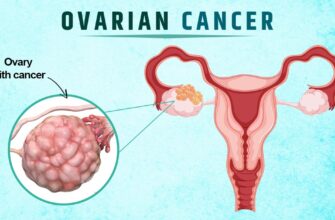For centuries, humanity has gazed at the stars, pondering the profound question: Are we alone? While definitive answers remain elusive, recent revelations concerning Saturn`s moon, Enceladus, have significantly amplified the chorus of scientific optimism. A meticulously re-evaluated dataset from the venerable Cassini mission hints at a richer, more complex organic chemistry within Enceladus`s sub-surface ocean than previously understood, pushing this small, icy world ever closer to the coveted status of a potential abode for extraterrestrial life. Yet, as with all groundbreaking astronomical discoveries, a healthy dose of scientific caution remains paramount.
Enceladus: A Cosmic Anomaly in Saturn`s Embrace
Enceladus, despite its modest diameter of just 500 kilometers, is a geological powerhouse. Nestled deep beneath its thick, icy crust lies a global ocean of liquid water – a remarkable feat given its vast distance from the Sun. This liquid state isn`t a cosmic fluke but a consequence of Saturn`s immense gravitational tug. The constant stretching and squeezing of Enceladus`s core generates internal friction, releasing a significant amount of heat, much like repeatedly bending a metal paperclip until it warms.
Perhaps the most captivating feature of Enceladus is its spectacular geysers. These icy plumes erupt from fissures, affectionately dubbed “tiger stripes,” near its south pole, launching water vapor and ice particles hundreds of kilometers into space. Imagine steam rising from a city manhole in winter, then amplify it by factors of lower gravity and pressure, and you begin to grasp the majesty of Enceladus`s cryovolcanism. These expelled particles don`t just vanish; they contribute significantly to Saturn`s expansive E-ring, acting as cosmic breadcrumbs for passing spacecraft.
The Cassini Legacy and the Building Blocks of Life
Between 2005 and 2017, NASA`s Cassini probe made multiple daring dives through these geysers and the E-ring, collecting invaluable data. Its instruments detected organic carbon and nitrogen—two of the critical elements required for life as we know it. Coupled with the confirmed presence of liquid water and an internal heat source, these findings led NASA scientists to boldly proclaim Enceladus as “the most promising place” for potential extraterrestrial life. This enthusiasm is well-founded, considering Earth harbors extremophile organisms thriving in analogous environments, such as deep-sea hydrothermal vents, completely devoid of sunlight.
Intriguingly, one prevailing theory suggests that life on our own planet may have originated in such hydrothermal environments. Evidence from LUCA (Last Universal Common Ancestor), a theoretical microorganism from which all life on Earth evolved, points to a thermophilic nature – an organism comfortable with high temperatures. This parallel further strengthens Enceladus`s candidacy.
The Refined Hunt: Khawaja`s Revelation
While Cassini`s initial discoveries were immensely promising, some scientific rigorists questioned whether the detected organic compounds might have formed in the vacuum of space around Saturn, rather than originating from Enceladus`s hidden ocean. This challenge prompted a new, exhaustive investigation by German astronomer Nozair Khawaja and his team. Their recent work, published in Nature Astronomy, sought to definitively trace the organics` origin.
With what can only be described as meticulous precision
, Khawaja`s team painstakingly re-analyzed data from Cassini`s Cosmic Dust Analyzer (CDA) from 2008. Their efforts unearthed traces of organic molecules previously overlooked. Among these fresh findings were a diverse array of new compounds: aliphatic, (hetero)cyclic ethers/alkalis, simple ethers/ethyl, and likely nitrogen- and oxygen-containing compounds. On Earth, these very molecules are integral parts of the complex chemical pathways that lead to the fundamental building blocks of life.
This discovery is nothing short of monumental. It confirms the presence of five out of the six essential elements for life, known collectively as CHNOPS: Carbon, Hydrogen, Nitrogen, Oxygen, and Phosphorus. Only Sulfur remains undetected (for now). While these compounds can undeniably form through abiotic (non-biological) processes, their presence is a prerequisite for life in any form familiar to us. Crucially, the team solidified the ocean origin of these molecules by observing their collision speeds with the CDA – particles from geysers moved at 18 meters per second, significantly faster than those in the radiation-exposed E-ring, which clocked in at 14 meters per second. The presence of analogous chemical elements in the E-ring further corroborates their oceanic genesis.
A Dose of Cosmic Skepticism: Proceed With Caution
Yet, the path to confirming alien life is rarely straightforward. Another recent study offers a more circumspect view. Grace Richards from Italy`s National Institute of Astrophysics and her colleagues proposed that many organic molecules found in the geyser plumes could have formed on Enceladus`s surface due to exposure to Saturn`s powerful magnetic field, rather than emerging from the ocean. Their findings, replicated by recreating Enceladus-like conditions in a specialized Hungarian laboratory, don`t negate the possibility of life but certainly underscore the importance of interpreting Cassini`s data with utmost prudence.
Adding to this measured approach is Denis Belyaev, a senior researcher at the Space Research Institute of the Russian Academy of Sciences. While acknowledging the significance of organics as potential indicators of microbial life, particularly in environments with hydrothermal processes providing energy, Belyaev introduces a critical nuance: the quantitative content of these organic compounds and the availability of sufficient oxygen as an oxidizer. He draws a parallel with Titan, another moon of Saturn, which boasts an abundance of hydrocarbons, including methane, but lacks the necessary oxygen to support biological life originating from them. “Cassini registered oxygen-containing components on Enceladus, including organic ones. But again, the question is quantity – is there enough for the necessary oxidative reactions to speak of a biological origin of the organics? In this sense, the discovered chemical compounds may give false hope,” Belyaev cautions. He emphasizes that while the new research confirms the hydrothermal and geochemical processes within Enceladus, it`s still premature to declare life on the icy moon.
Why Keep Searching? The Profound Questions
Despite the inherent uncertainties and the protracted scientific debates, the quest for life on Enceladus remains profoundly important. As Khawaja succinctly puts it, “Even if we don`t find life, it will be a huge discovery, as it will raise serious questions about why it isn`t present in such an environment, despite suitable conditions.” The absence of life under seemingly ideal conditions could be as revelatory as its presence, reshaping our understanding of abiogenesis and the universality of life in the cosmos.
The Long Game: ESA`s Vision for Direct Exploration
Ultimately, to move beyond inference and into direct confirmation, one method stands above all others: landing on Enceladus and collecting pristine ice samples. Such ambitious plans are already in motion, albeit on a galactic timescale. The European Space Agency is reportedly evaluating proposals to dispatch an orbiter and a lander to Saturn`s intriguing moon. However, those eager for immediate answers will need to cultivate cosmic patience; the projected arrival date for such a mission is not until 2054. In the grand scheme of the universe, a few decades is but a blink, but for us Earth-bound enthusiasts, it`s quite a wait for potentially the most significant news ever.
The unfolding saga of Enceladus perfectly encapsulates the scientific endeavor: a blend of audacious discovery, rigorous scrutiny, and the unwavering human drive to explore and understand our place in the universe. Whether its icy ocean teems with life or remains a sterile chemical wonder, Enceladus has already solidified its place as one of the most compelling objects in our solar system, perpetually whispering secrets that challenge our perceptions of what it means to be alive.







